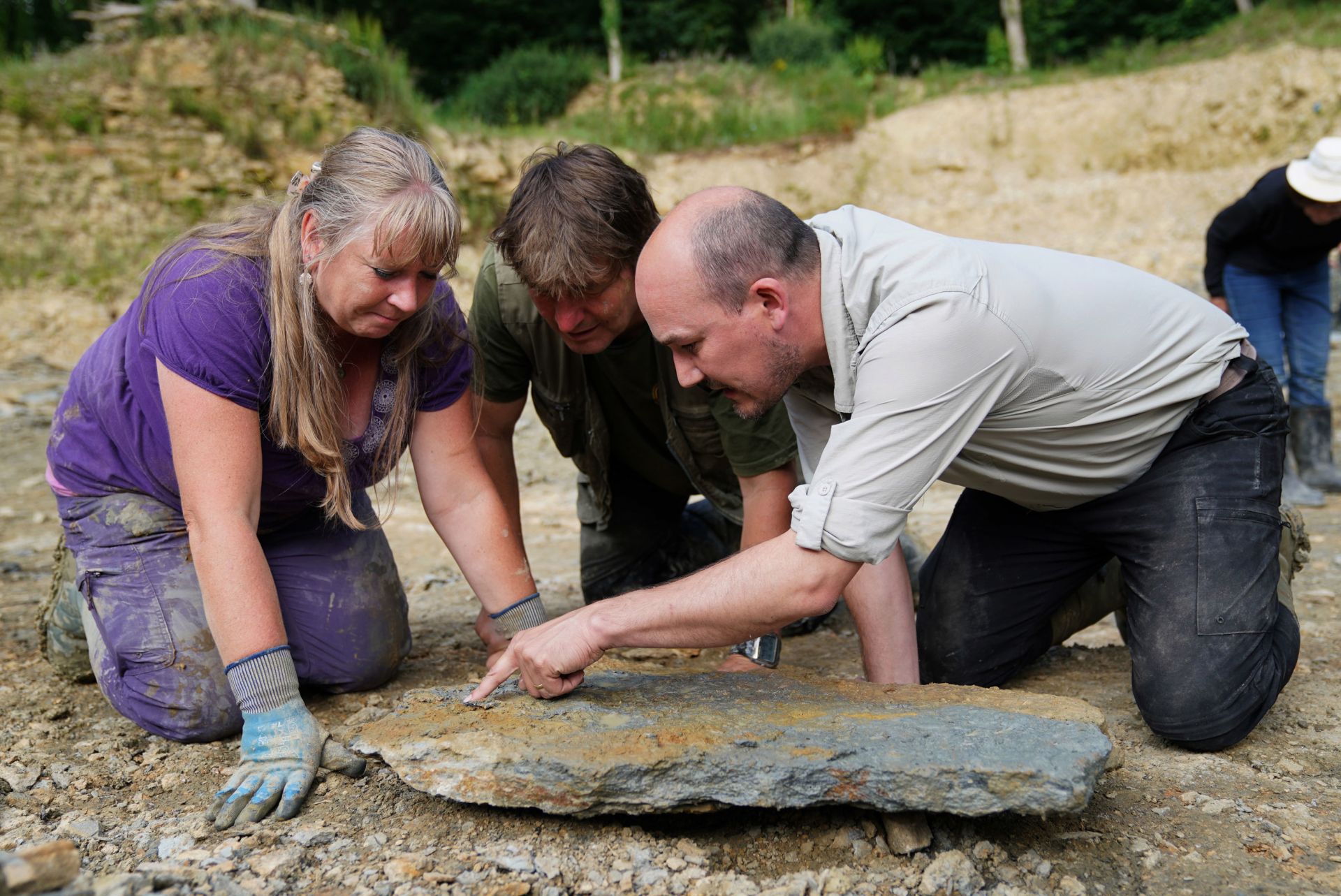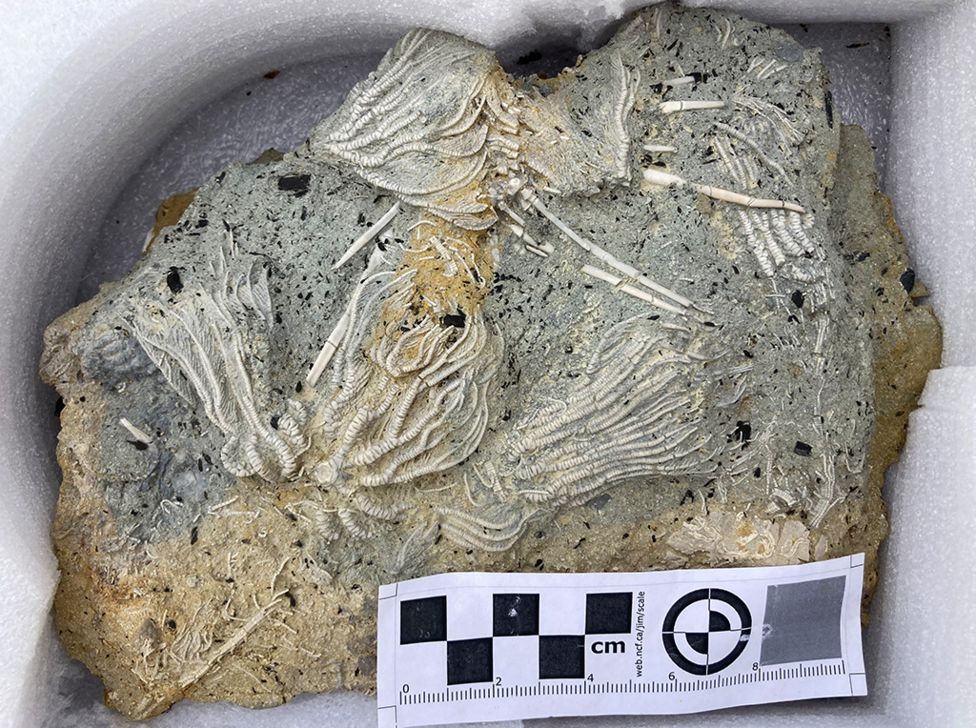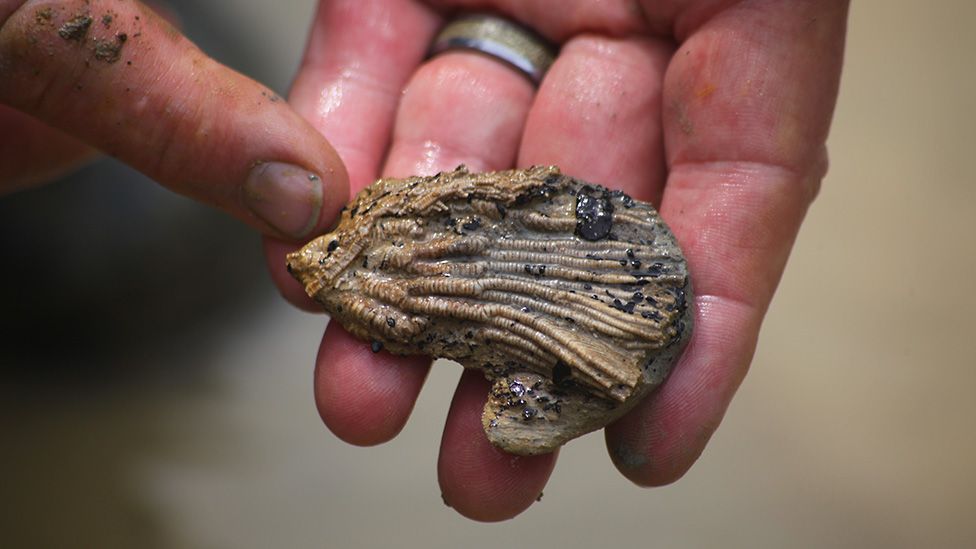Brit couple discovers treasure trove of fossils dubbed ‘Jurassic Pompeii’ using Google Earth
Relics 10:33 PM - 2021-07-23
.
ONE of the most important collections of uncommon marine fossils anyplace within the UK has been found by a couple using Google Earth.
Amateur palaeontologists found the location in Wiltshire earlier this year whereas researching the geology of the world on-line.
After being contacted by the duo, Dr Tim Ewin, a senior curator in Earth sciences on the Natural History Museum (NHM), secured funding for a dig on the website, and was amazed on the quantity of specimens found.
The findings of a whole bunch of samples, from the Middle Jurassic (174million to 164million years in the past) ought to enable new analysis that was by no means earlier than potential because of the small quantity of samples held in collections.
Feather stars (stalk-less crinoids), sea lilies (stalked crinoids) and starfish (Asteroidea) fossils are uncommon.
Their multiplate skeletons rapidly collapse after demise they usually require prompt burial for preservation.
Neville and Sally Hollingworth, from Swindon, have been the co-discoverers of the location.
Dr Hollingworth can also be an honorary analysis affiliate on the University of Birmingham’s faculty of geography, earth and environmental science.
He advised the PA information company: “About six months in the past, in the beginning of the year, once we have been performing some analysis on native geology we seen on Google Earth this little quarry and acquired in contact with the location supervisor and requested if we might go to.
“So we came on down to the bottom of the quarry and we noticed that the floor of the quarry was a clay layer, and on the surface of the clay with lots and lots of little fossils which we call crinoids or feather stars.”
The couple took a slab from a website and cleaned it up at house, the place they found an “incredible sight” of “beautiful” sea lilies, crinoids, starfish and brittle stars.
Mrs Hollingworth mentioned: “It was superb, the preservation is totally gorgeous.
“They are 167million years old, these little critters, and the preservation is just amazing.”
Dr Hollingworth mentioned that in 2004 he discovered a mammoth cranium, however that the invention of the location was equal, if not higher, to that.
Speaking on the dig, he advised PA: “This is a different type of site with different types of fossils, but they’re unique from that perspective, this is a mammoth find.”
He added: “We’ve acquired a multidisciplinary crew bringing all of it collectively to know the setting wherein these animals lived after which died.
“From all of the proof we have gathered to date, it was fairly sudden they usually have been in all probability buried alive by mudflow, some type of submarine landslide buried all of them the place they have been.
“And that in itself is tragic but fascinating because we’re looking back at a period of time when the dinosaurs were living on the land and vegetated shallow land masses around here.”
Dr Hollingworth added that the discover was like “a window back in time” to what he calls the “Jurassic Pompei” as a result of all of the animals died the place they lived.
He mentioned: “They weren’t transported anywhere, they were literally buried, that was it instantly, and we’re unearthing that.”
Dr Ewin defined: “We know that they have been buried throughout life, as a result of we have some proof to show that the animals are adopting what we name stress place to being buried, they’ve closed up their arms to attempt to cease the mud entering into their mouths and our different orifices.
“So we know these animals were alive when they were buried.”
He added: “We knew instantly that it was an important site because of the quality of preservation, the number of specimens that we could find and that is exceptional.”
Throughout the digging days in early July, excited teams of the folks unfold out throughout the location, and lined in mud, known as out pretty usually as they made a brand new discovery, or unveiled a fossil after fastidiously clearing away some of the clay.
Dr Ewin mentioned the crew had discovered so many specimens {that a} triage course of had been carried out as a way to resolve what to depart behind.
He advised PA: “It’s a very nice downside to have as a result of these fossil starfish and sea urchins are actually uncommon.
“And normally we have the problem ‘are we going to find enough?’ and this is an alien sort of position to be in where we’ve got so much that we’re sort of having to contemplate leaving behind really nice material.”
The researchers suppose that whereas some of the fossils belong to creatures already recognized to science, others could also be new discoveries.
They imagine they’ve unearthed three new species to date, a kind of feather star, a brittle star and a sea cucumber.
Other specimens will enable consultants to take a look at the evolution of the animals as they’ve discovered each juvenile and grownup samples, and even a starfish with an arm being regenerated.
Dr Ewin advised PA: “It’s actually an distinctive website, and the factor that is so superb about it’s, is simply the sheer quantity of materials simply, and it is all superbly preserved.
“And so it’s going to allow us to do some really cool science.”
Describing the world that the fossils have been present in, he mentioned sooner or later it will have been some type of delta regime.
“So we know that by looking at the rocks, and there’s also a huge abundance of fossil wood at the site, and echinoderms, starfish and sea urchins, only live in the sea,” mentioned Dr Ewin.
He added: “And so to have sea urchins after which a load of fossil wooden, means that there was a kind of delta coming in.
“And in order to get these echinoderms preserved, we need to have very rapid burial in sediments low in oxygen.”
Fossilised stays of big prehistoric creature with 20ft wingspan discovered embedded in cliffs on Isle of Wight
In different information, the stays of the oldest recognized shark sufferer reveal he died 3,000 years in the past after his leg was bitten off.
A mysterious tomb just some miles from Dublin is older than the Pyramids of Giza and continues to baffle scientists.
The first people to set foot on the North American continent might have arrived 30,000 years in the past, in accordance with new proof.
And, the thriller surrounding the age of the Cerne Abbas Giant might have lastly been solved.
PUKmedia / The Urban Tower
More news
-
German Forces Commander Ended his Mission at Mam Jalal's Grave
12:28 PM - 2024-04-23 -
Golden Bla Awards Ceremony Takes Place in Sulaymaniyah
11:32 AM - 2024-04-23 -
PUK Official: PUK is Committed to Holding Elections on Time
11:04 AM - 2024-04-23 -
Turkish President Meets Kurdish Officials in Erbil
10:42 AM - 2024-04-23
see more
U.S. State Department Mentions the Deterioration of Journalists' Rights in Iraq & Kurdistan
06:48 PM - 2024-04-25
10 Notable Individuals Receive Golden Bla Award
09:27 PM - 2024-04-23
DPM Talabani Asks Turkish President to Lift Ban on Sulaymaniyah Airport
11:43 AM - 2024-04-23
Iraqi & Turkish Presidents: Problems Should Be Resolved Through Dialogue
05:00 PM - 2024-04-22
Most read
-
U.S. State Department Mentions the Deterioration of Journalists' Rights in Iraq & Kurdistan
Reports 06:48 PM - 2024-04-25 -
Another International Report Mentions Kurdistan's Limited Freedom
Reports 09:24 PM - 2024-04-25







.jpg)
 Application
Application


